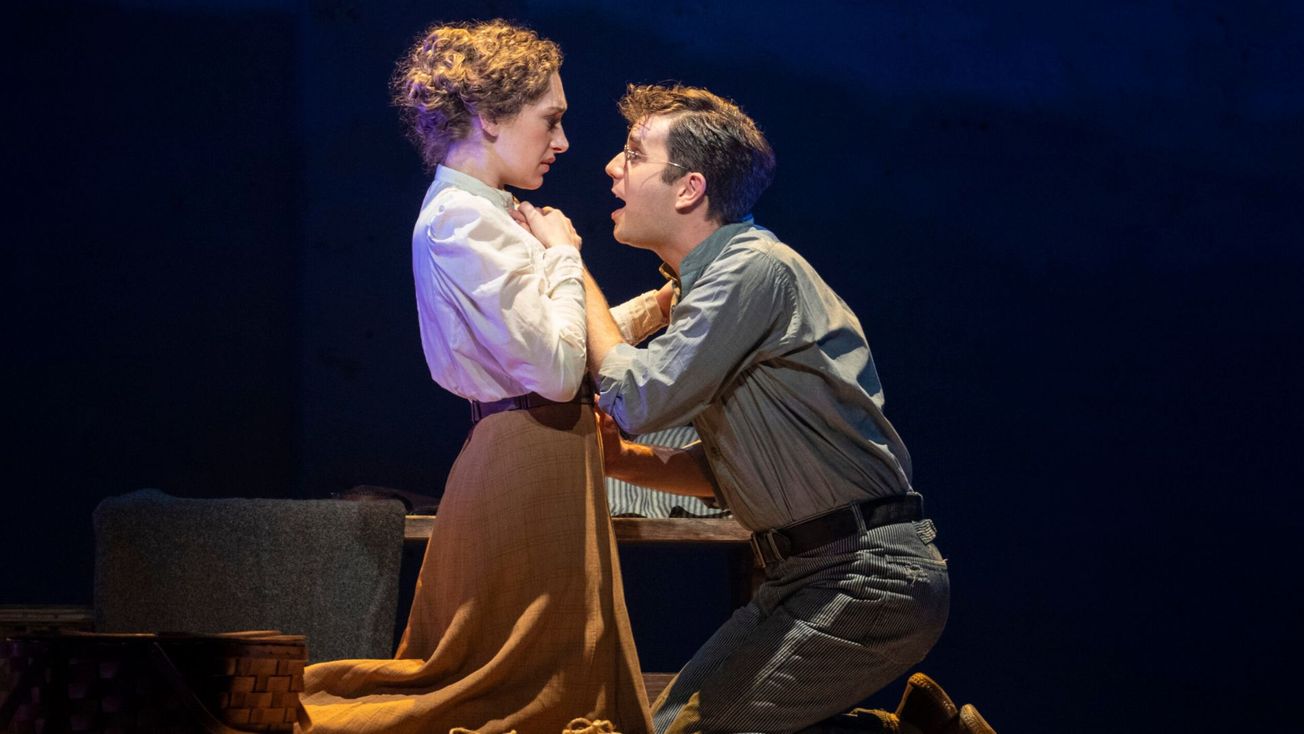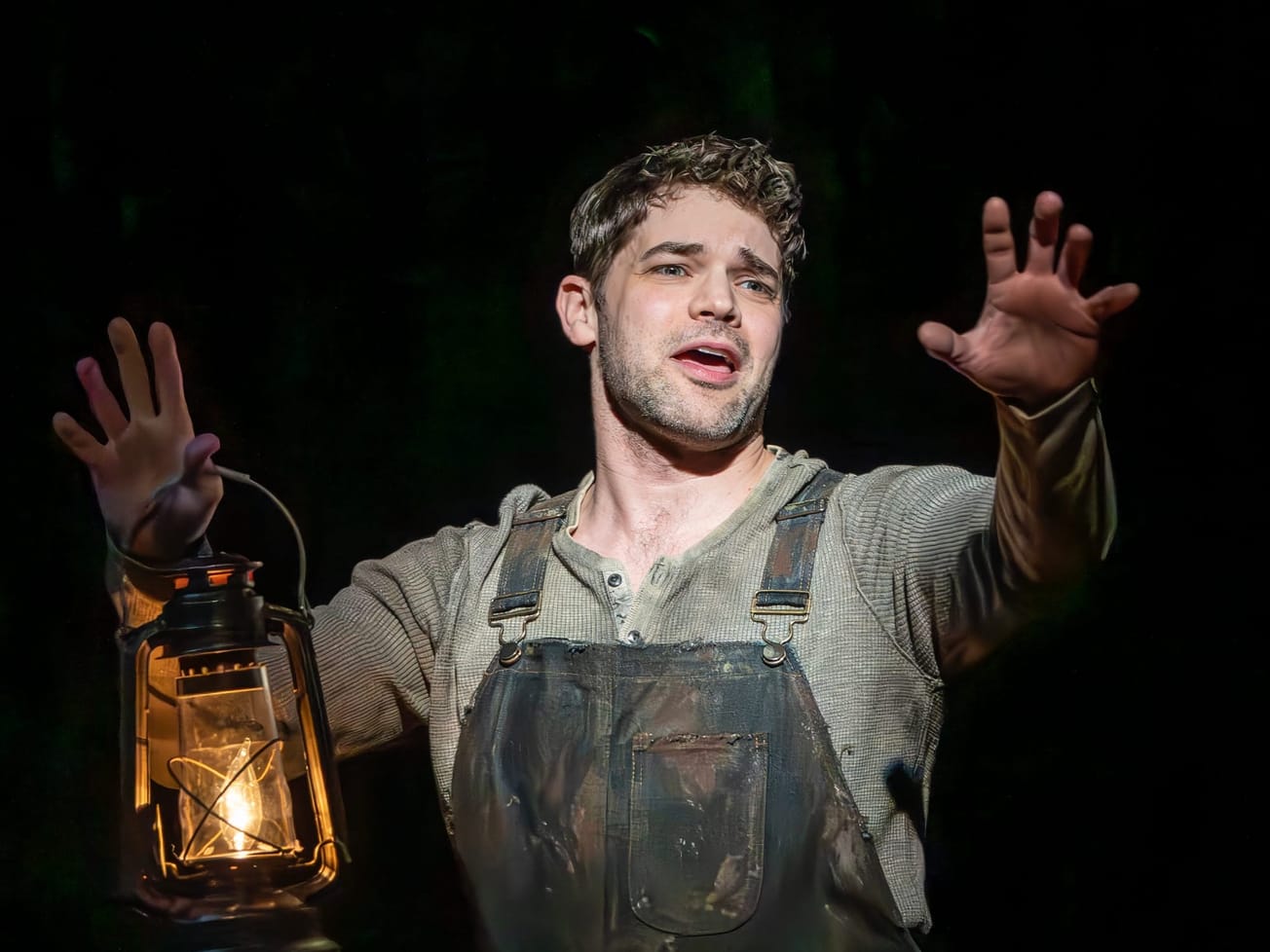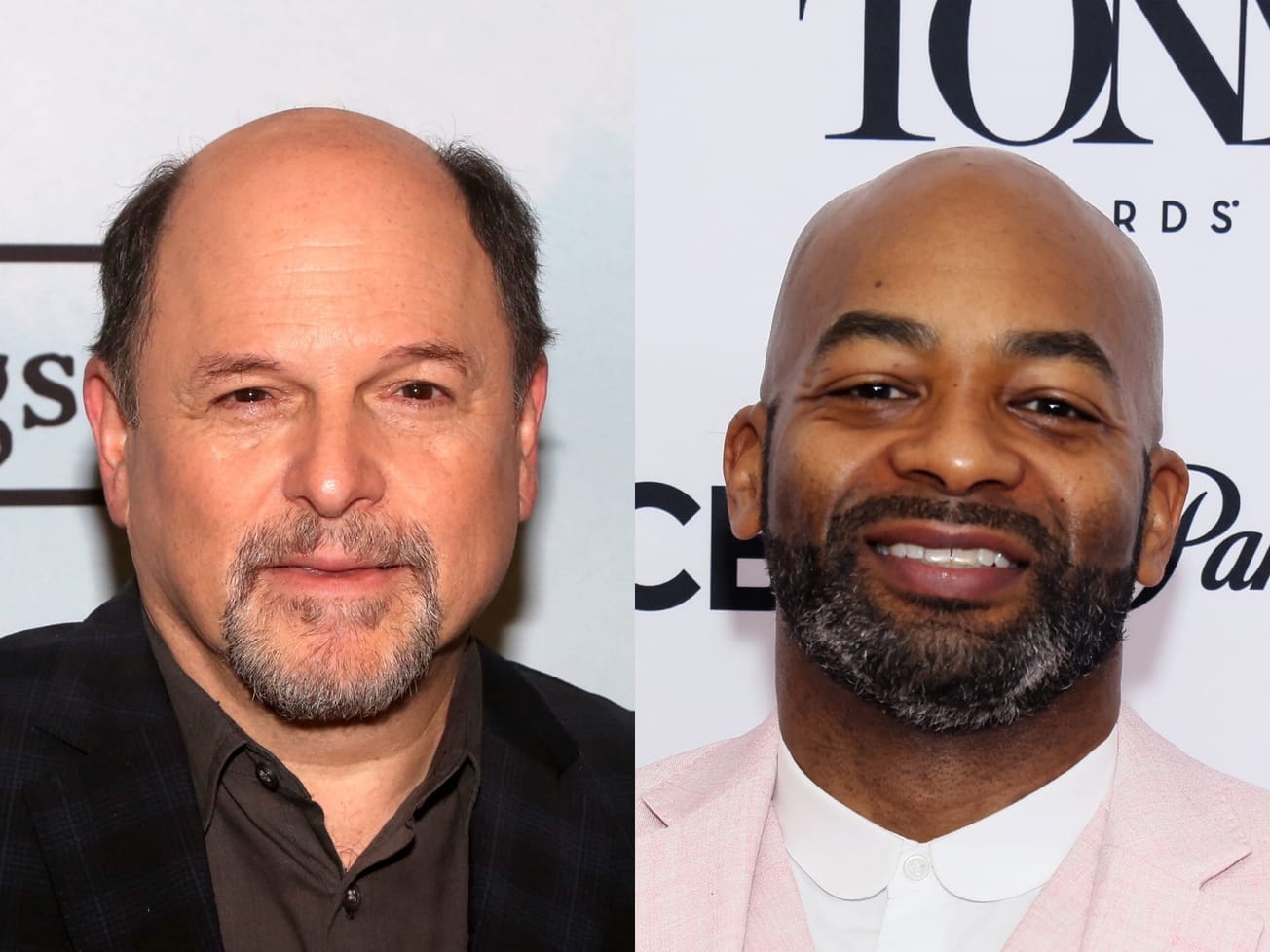When “Parade” first debuted on Broadway in the winter of 1998, the production was more short-lived than anyone had hoped for. Still, in the spring of 1999, the musical’s sweeping score by then-newcomer Jason Robert Brown won the Tony Award as did its heartbreaking book by Alfred Uhry, and the show’s legacy has burned strongly for decades.
While the script has been tweaked since its Broadway debut, the story itself has not changed. The musical still portrays the wrongful accusation of Leo Frank for the rape and murder of 13-year-old Mary Phagan, his subsequent 1913 trial, the support of his wife, Lucille, and Frank’s fate as the first Jewish American man lynched in America. The show’s music and lyrics haven’t changed, either; they’re still the songs that Ben Platt and Micaela Diamond — stars of the current revival — fell in love with as they grew up listening to the original cast album. And yet, this “Parade” feels like nothing that has come before it.
Ever since quickly closing at Lincoln Center Theater 24 years ago, Brown and Uhry have been tinkering with the show — their most significant reexamination appearing in a 2007 London production. Uhry estimates that 15 percent of that staging was new, including the addition of the character of Minnie, the Franks’ housekeeper, and the further development of Tom Watson, a Christian politician who fans the flames of anti-Semitism towards Frank. Those changes have carried over to subsequent major productions, including this revival.
“Leo and Lucille are virtually identical,” Brown said. “What we did much better as time went on was to really talk about what life was for everyone else. What was it to be a southerner in a post-Civil War South in Atlanta at that time? What was it to be Black in that society? What was it to be poor? What was it to be powerful and politically connected?” That scope was always the essence of original director and co-conceiver Harold Prince’s approach, according to Uhry. But time allowed Uhry and Brown to manifest it in their work on the page.
Leading up to this Broadway revival, dramaturgical excavations continued, this time in partnership with two-time Tony-nominated director Michael Arden and a fresh cast.
“The actors we put onstage here are constantly challenging and interrogating the material in ways that are thrilling,” said Brown. “They don’t cause us to go back and rewrite, but they cause us to go back and say, ‘Why did we write it this way? What is it supposed to say? And how can we help [the actors] clarify that?’”
“In the 1998 version, I think those [characters] were very primary-colored,” he continued. “The gradations [here] are much finer in ways that I’m very proud of.”
Those nuances are illuminated by Arden’s staging, which simultaneously overlays a historic perspective (displayed via projected images of the real people who are the basis for the story) and a present view of the text.
“When I saw the show in 1998, I felt like everybody was playing it as a period piece,” Brown confessed. “I’m very aware, at my age now, that it’s very — not inappropriately — contemporary. What [the actors] are doing, you would only play it this way if it were 2023.”
Now the musical prickles with presentism of today’s cultural clashes over racism, anti-Semitism and the assault on people of marginalized genders, as Uhry weaves the plights of young Mary Phagan, Black southerners represented by servants Riley, Minnie and Angela, and Jews Lucille and Leo Frank.
“Almost everybody in this piece is a victim,” Uhry said, even those who don’t seem so at face value. “I’m a Georgia boy and the South was occupied territory for many years. Mary Phagan’s actual father came home from the Civil War with one leg. He lost his farm to taxes, had to move his family to town and put his little girl to work. These people suffered. They believed in a cause — which may not be a very good cause, but they believed it. They fought for the glory of the South. You can’t defend it, but you have to understand what they went through.”
Even as Uhry and Brown have embedded compassion in their text, it’s up to their performers to wrangle it in the live medium.
And Platt and Diamond play Leo and Lucille from their guts. They combine perspective and authenticity from deep within. While these actors grew up on the sounds of the original leads — the late Brent Carver and current Broadway player Carolee Carmello (who is appearing across the street from “Parade” in “Bad Cinderella”) — Platt and Diamond focus on what they have in common with the real Leo and Lucille.
“Both Brent and Carolee were a bit older and they were a bit more fully formed as adults than when this was happening to Leo and Lucille, [who] were 29 and 23. We are basically those ages,” Platt pointed out. “With Leo it has been really helpful for the ways in which maybe he was posturing as a man or as an adult because he felt that’s what was needed from him, from his Jewish community and from society and as a husband. And then remembering the vulnerability that comes along with being around 30.”
Diamond has also leaned into the authenticity of her age (the actor is 23) and thinking about what it must feel like to be married for three years by age 25. “I think she just wasn’t as strong as I thought at the beginning [of the story],” said Diamond. “I have been able to find more of her fear for marriage, which I can relate to. What does it mean to be with someone forever? They’re not newlyweds at the start; they’re three years in and things are a little rocky, and they’re not necessarily connecting.”
But Platt and Diamond are profoundly connected to each other and the story. Not only are the actors the same approximate ages of the real Leo and Lucille, but both performers are also Jewish. As Brown said, “There is something enormously powerful about a Jewish actor playing a Jewish role.”
The authenticity and perspective that links today to 110 years ago coalesce for a new “Parade” that — this time around — welcomes audiences who seem ready to jump in wholeheartedly. As Platt reflected with a sense of wistfulness and gratitude, “In whatever way it was partially heard in the ’90s, or appreciated by some and not all, or just wasn’t quite fully appreciated in the way that maybe it should be, it feels like, right now, people are embracing the full picture.”


























































